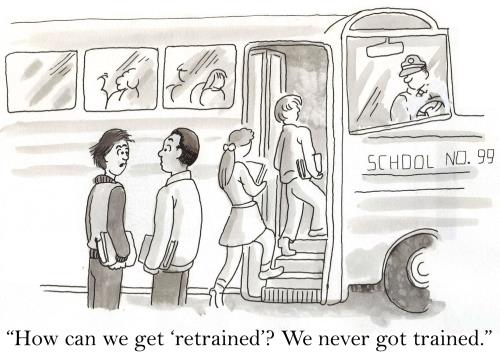28 Mar 2021

By Mark Richards,
The attainment gap has been brought sharply back into focus because of the COVD-pandemic. Many have voiced concerns about the effect the disruption to schooling has had on all pupils, but especially those from more disadvantaged backgrounds. The impact of the pandemic and the subsequent national and local lockdowns on students has undeniably been significant. When you throw into the mix some of the added challenges facing disadvantaged children: poor internet access, or the lack of digital devices and/or appropriate quiet working space at home; it’s not hard to see why there are major concerns about the widening of the attainment gap.
The last year has been possibly the most difficult period for the education sector in living memory. The challenges and obstacles that teachers and schools have faced have been substantial, and research from the Education Policy Institute shows that the attempts to bridge the disadvantage gap have stalled over the last year. In fact, it is suggested that disadvantaged students are 18 months behind their peers by the time they take their GCSEs. Other surveys report that over 60% of school leaders believe the gap has widened since the pandemic began.
Can COVID accelerate solutions for the attainment gap problem?
We can be in no doubt about the scale of the difficulties that schools have faced since the first lockdown began. However, we should not kid ourselves into thinking that the attainment gap is a COVID-made problem. The issues were around long before the start of the pandemic. But if there are positives to be taken from the current situation (and we could all do with some of those!), it’s that strategies to address the attainment gap are likely to be accelerated now.
There is plenty of evidence to suggest that the attainment gap grows every summer because of the extended break as some students experience a loss of learning being away from school. Similarly, stacks of research over the years indicates that there is a dip during the transition from primary to secondary school. Furthermore, there has long been talk of a dip in progress during Year 8 being another issue.
Despite all this, the issue of the attainment gap, although not completely ignored, has never been front page news. Now, because of the pandemic and concerns about the impact of children’s mental health, it is forefront in people’s minds.
The pandemic has increased the use of technology in learning and a blended solution between classroom and home learning could well be the key to bridging the attainment gap. Of course, plenty still needs to be done around the problems about home internet access. However, with the attainment gap so prominent in the minds of the public, it is set to become a ‘political football’. This will at least mean that there are likely to be many suggestions and strategies introduced in the coming months to help bridge the gap.
RELATED POSTS
1- Attainment gap widens due to COVID lockdown
2- How to Close the Gap Between Learners?
3- Addressing the Learning Gap – What Can Teachers Do?
4- What is the best way to close the attainment gap?
5- Educational attainment and outcomes for children from poorer families
We encourage our readers to share their knowledge.
Do you have an idea, view, opinion or suggestion which would interest others in the education sector?
Are you a writer? Would you like to write and have your article published on The Educator?
If you are connected with the education sector or would like to express your views, opinion on something required policymakers’ attention, please feel free to send your contents to editorial@theeducator.com